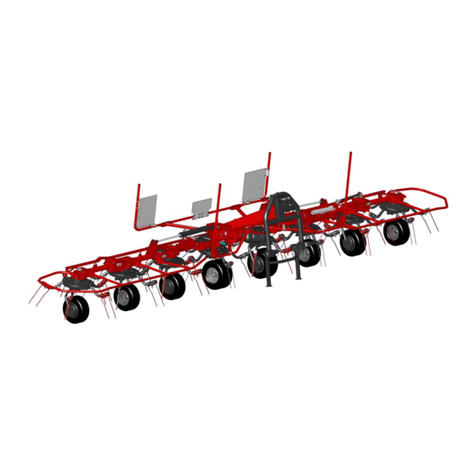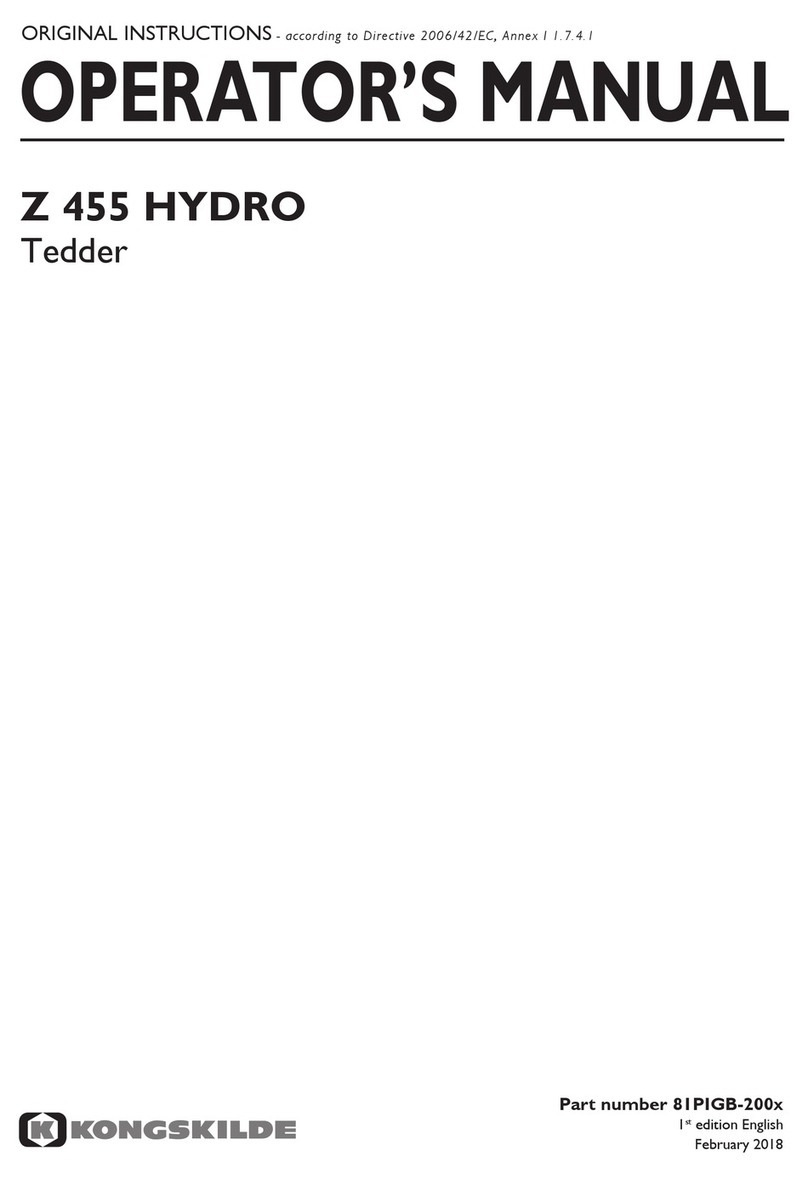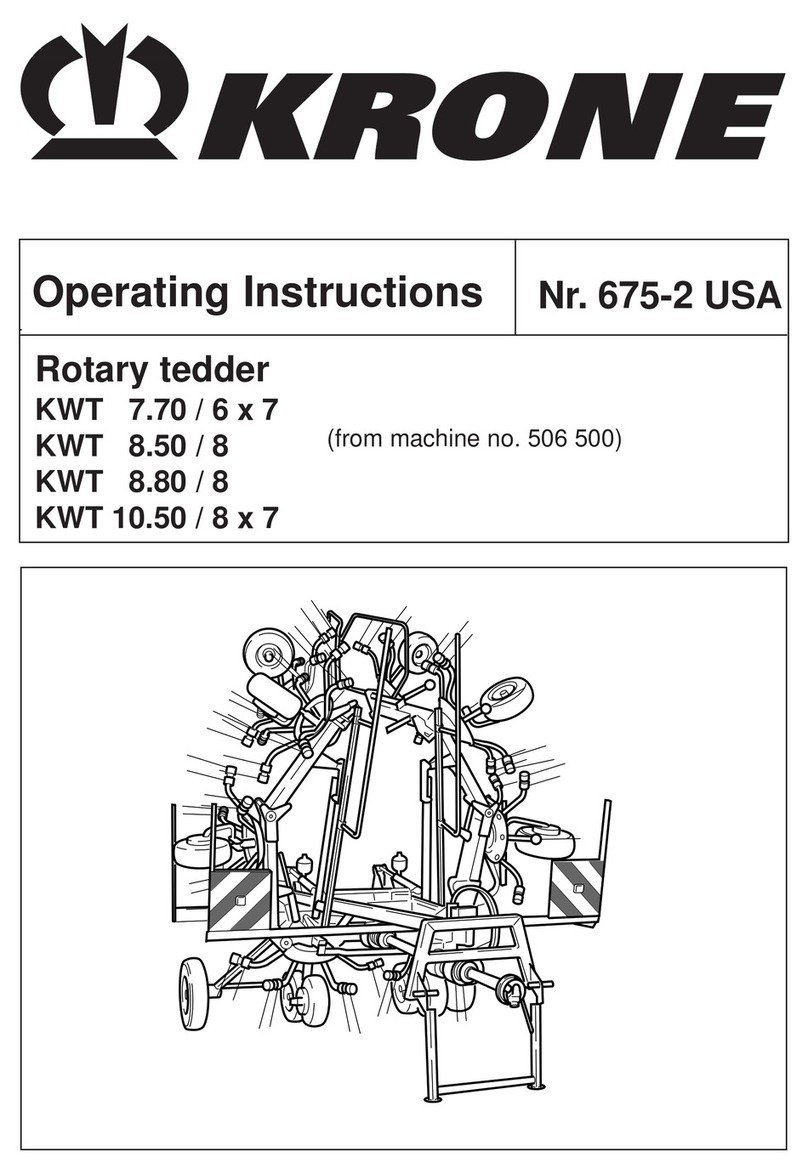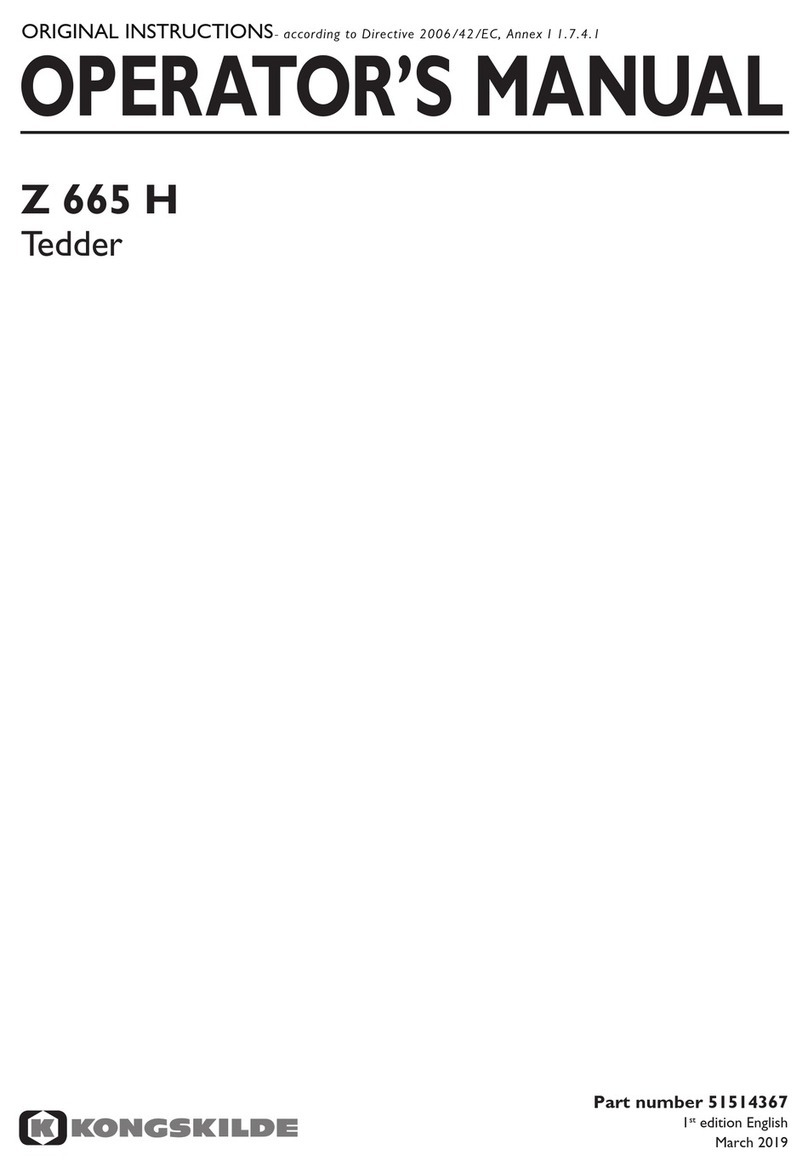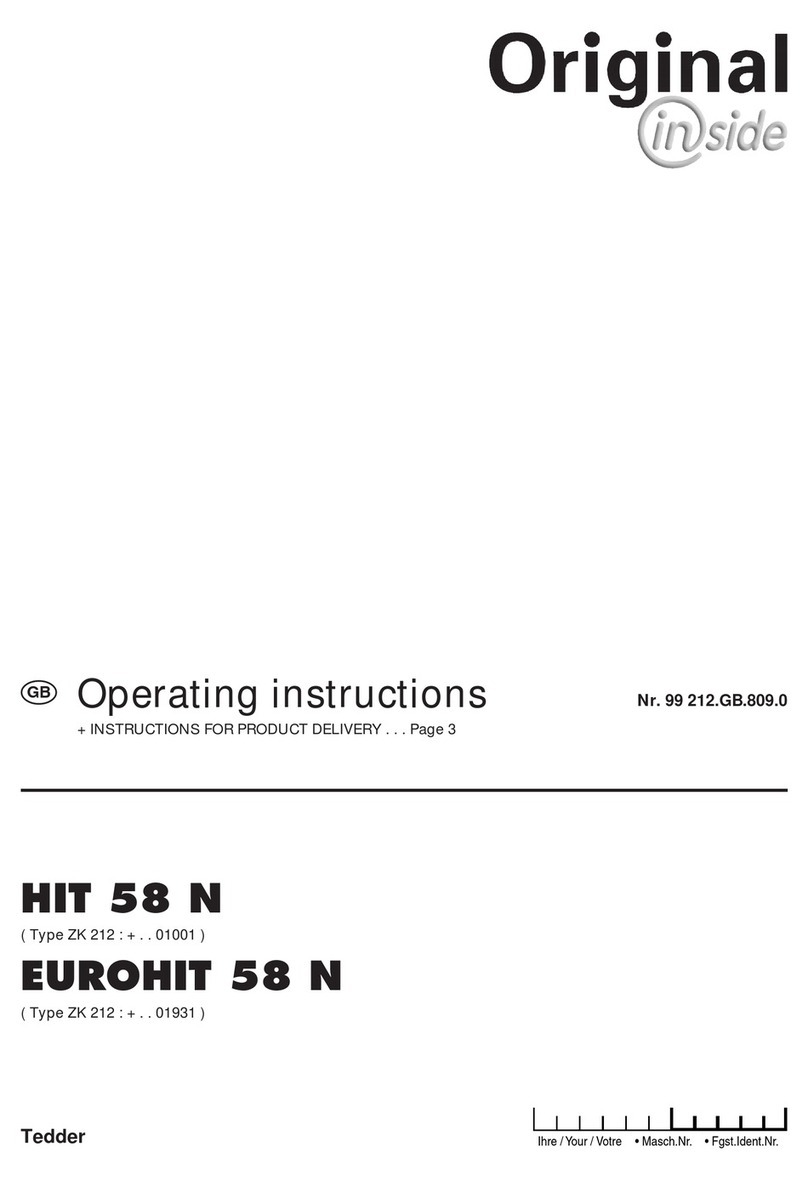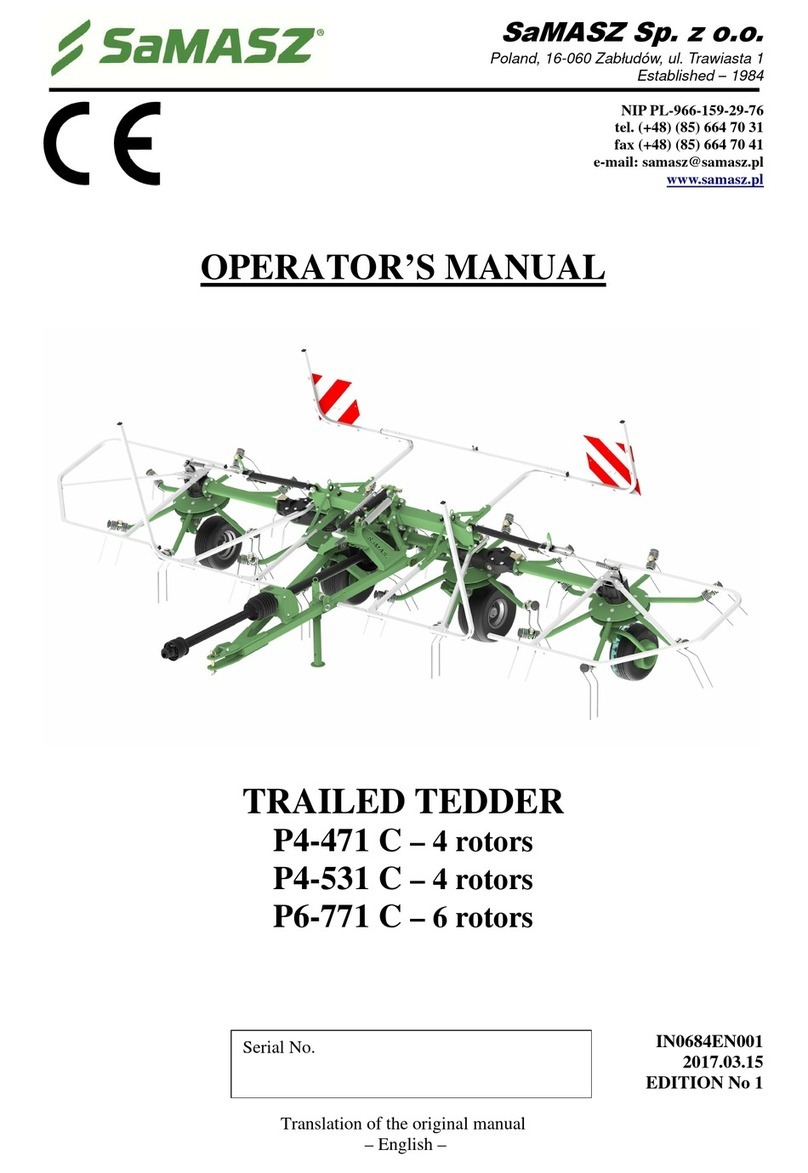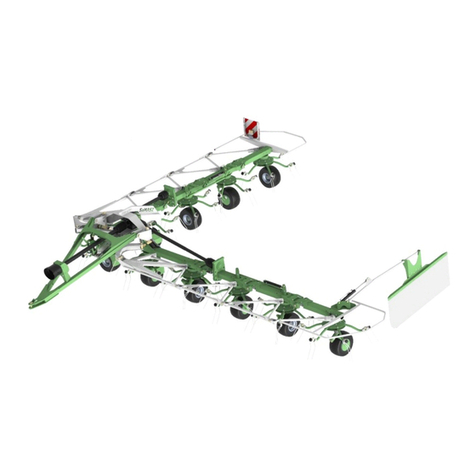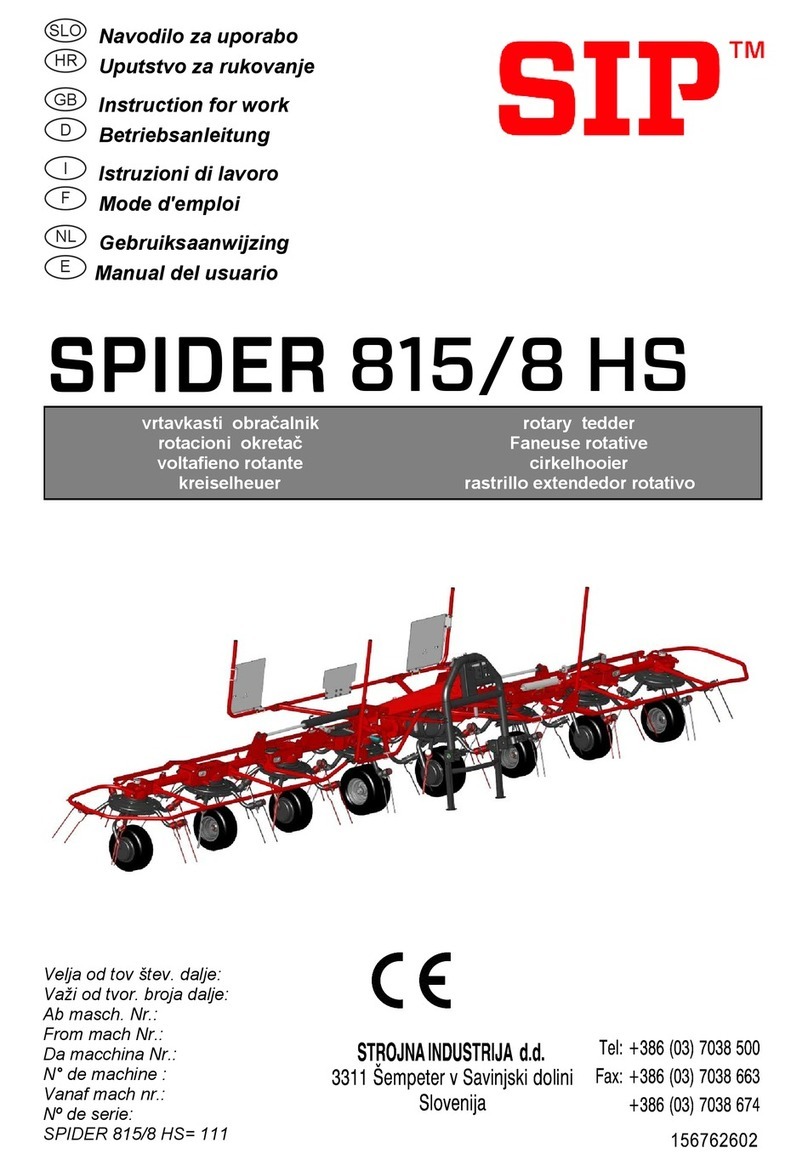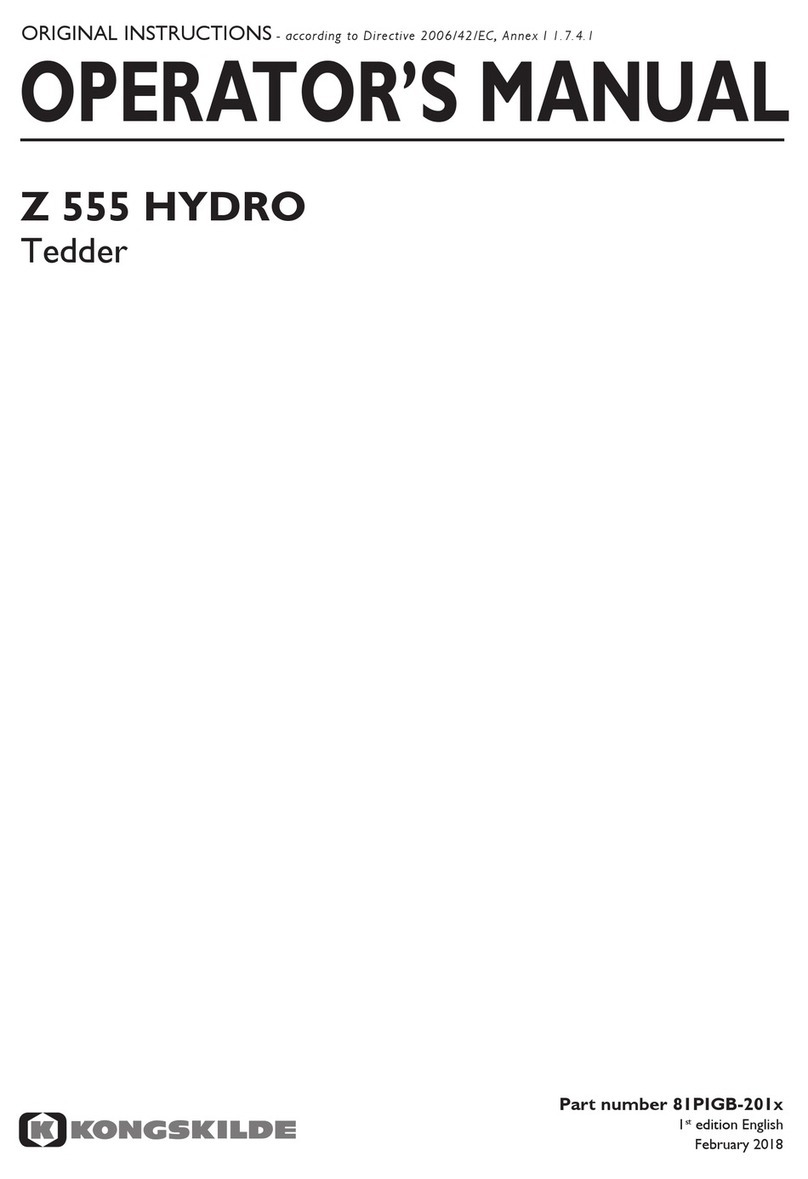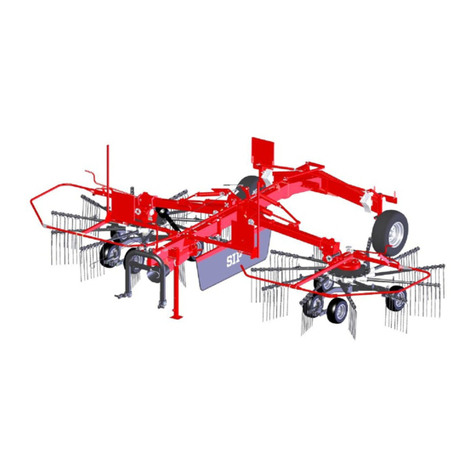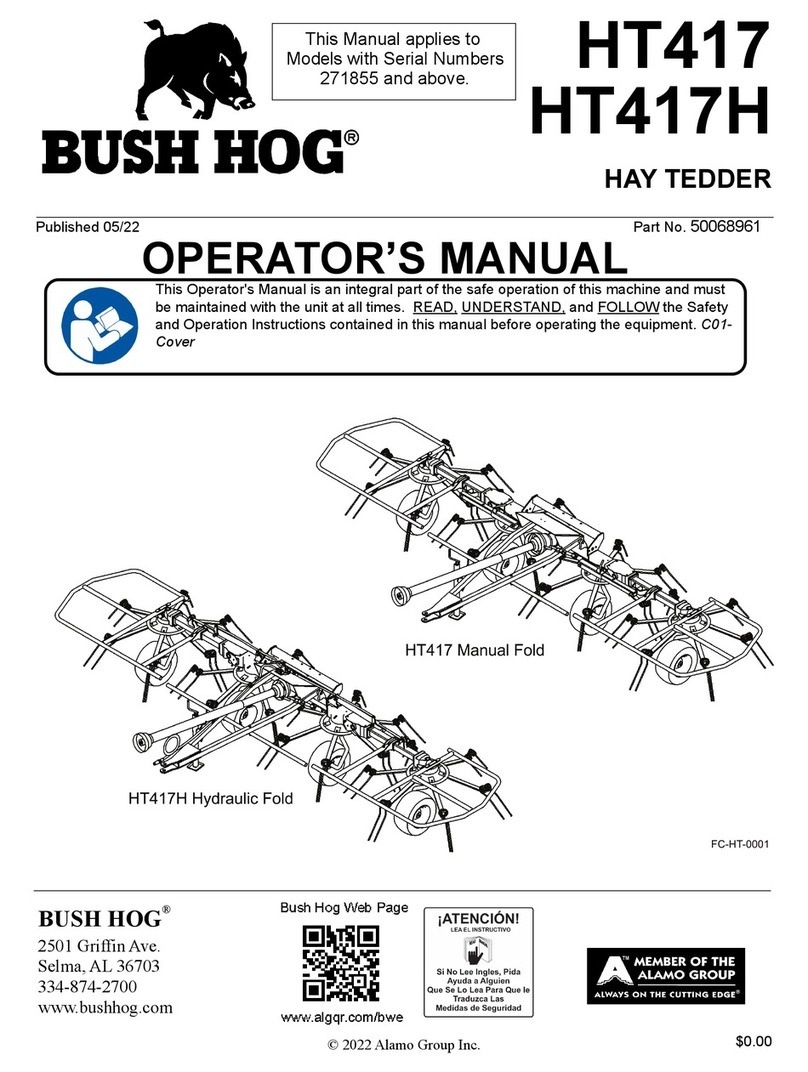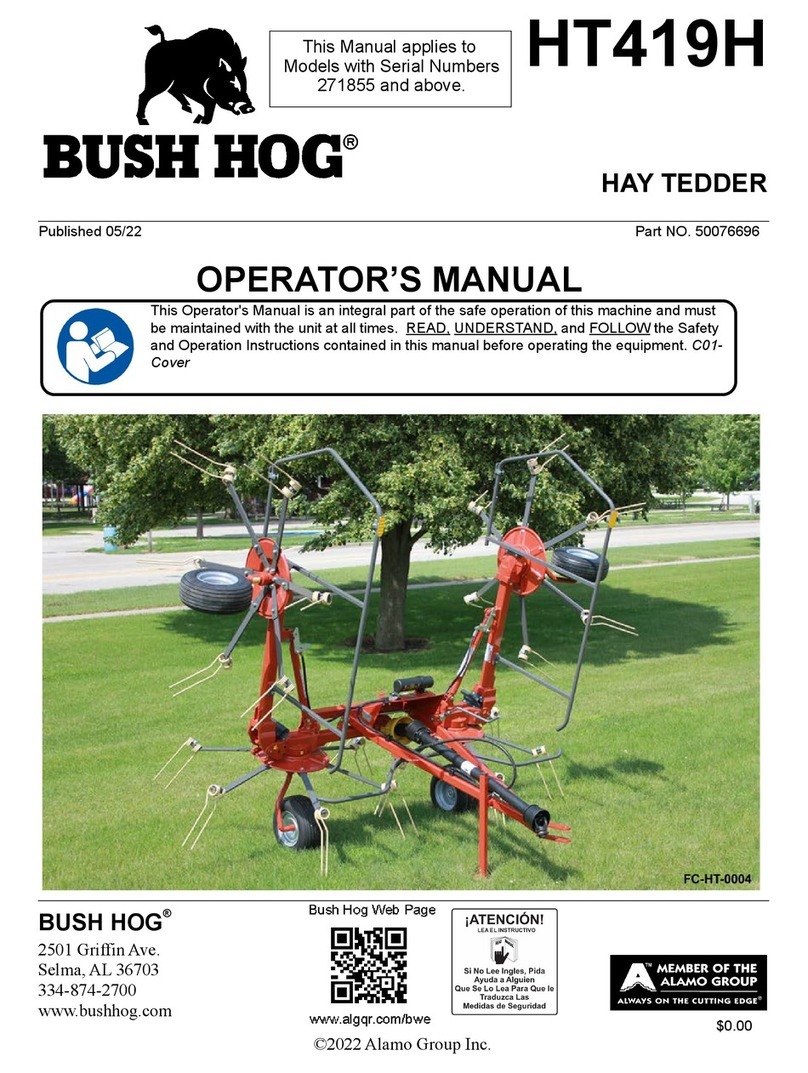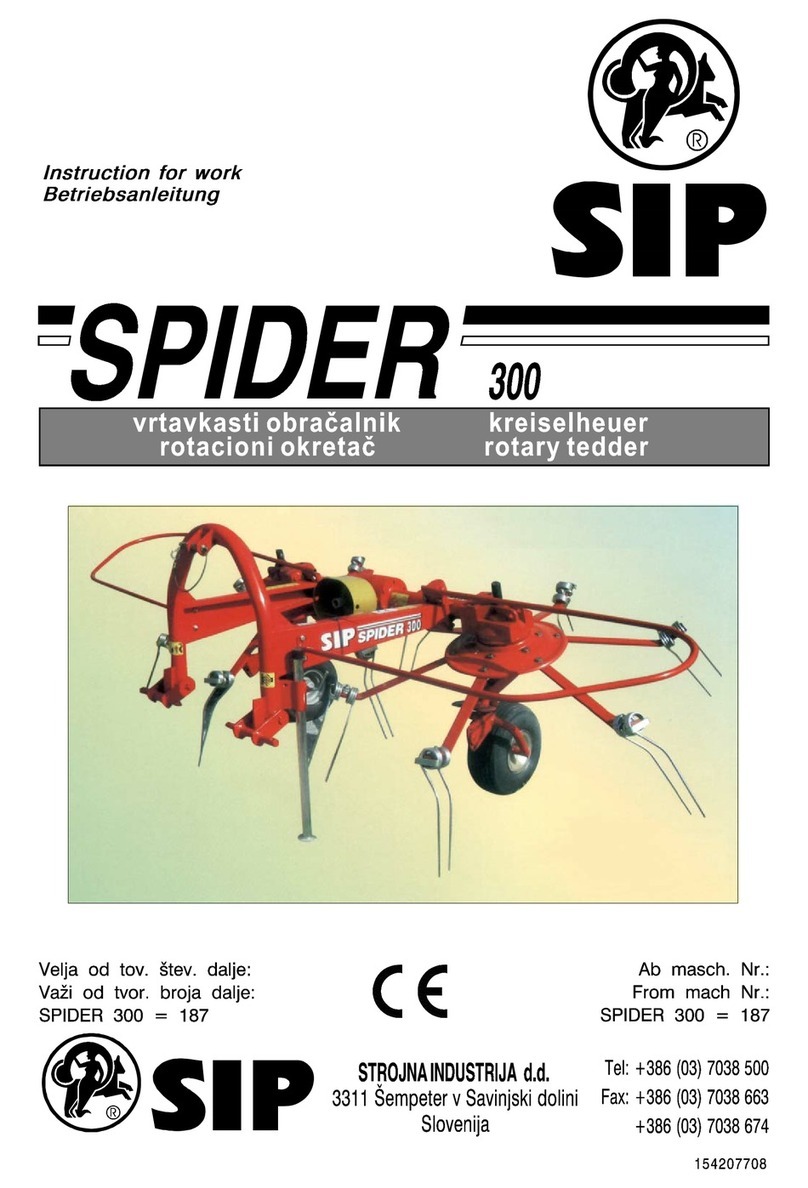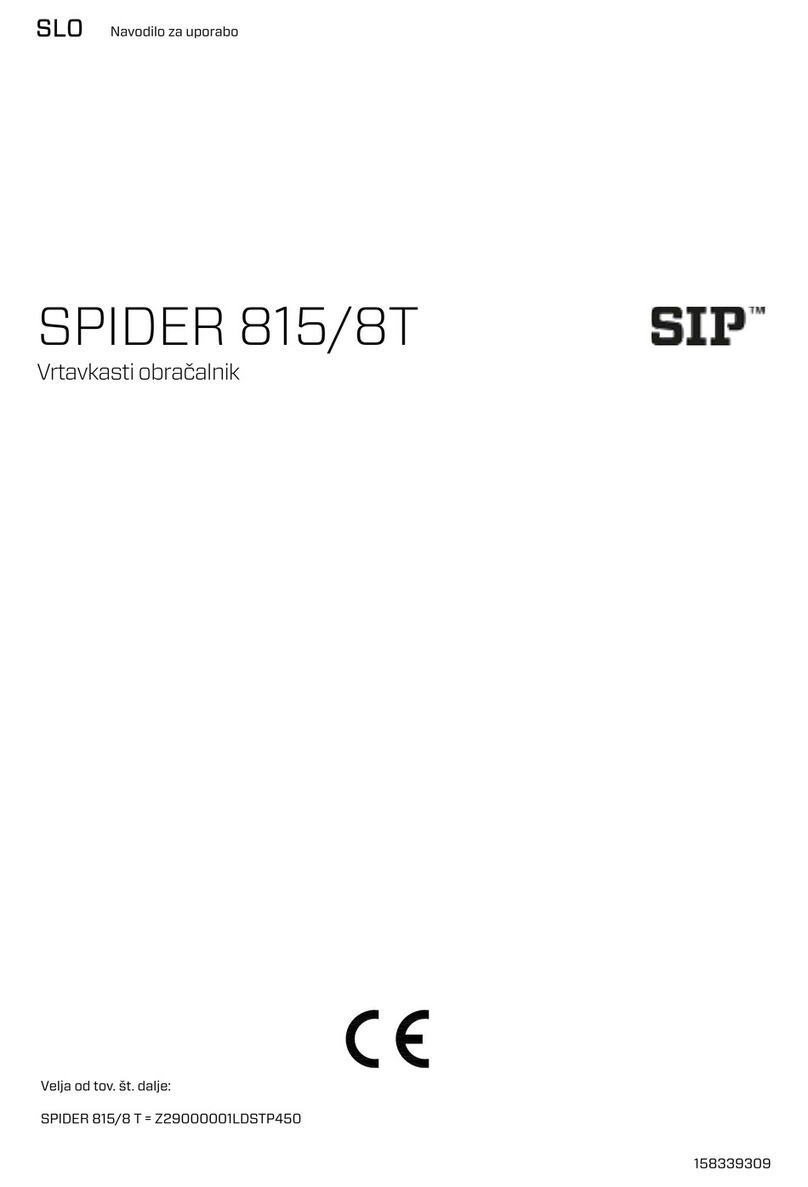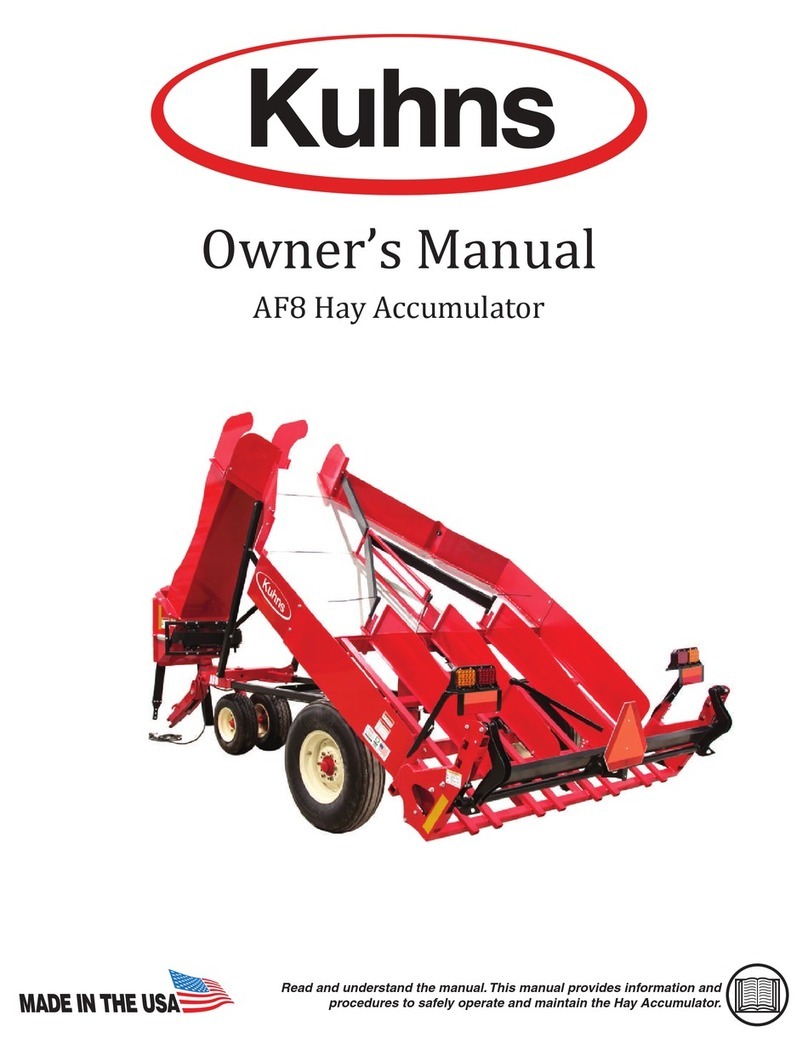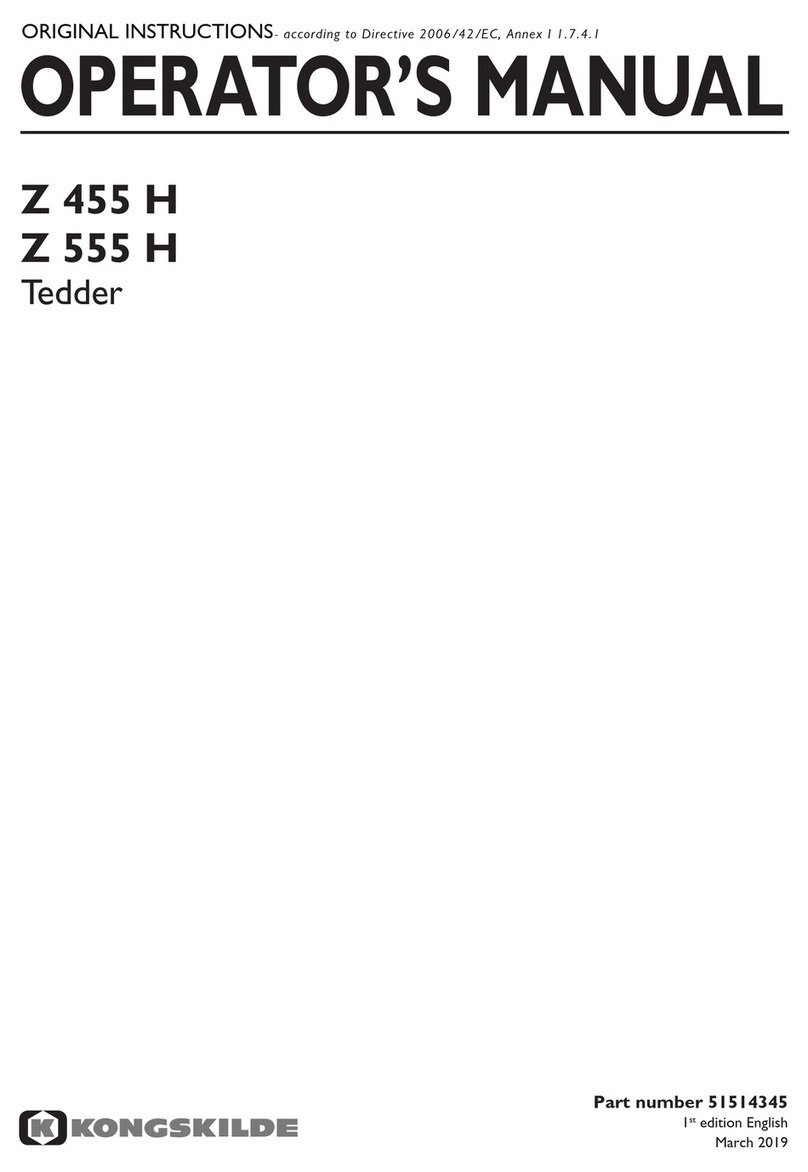
Operator’s manual Rotary tedder P4 – 471 and P4 – 531
Rotary tedder P6 – 651 and P6 – 771
- 1 -
Contents page
1.
IDENTIFYING THE MACHINE................................................................................................2
2.
INTRODUCTION .........................................................................................................................2
3.
PROPER USE ................................................................................................................................3
3.1.
Technical data...........................................................................................................................3
3.2.
Design and working principle ..................................................................................................4
3.3.
Standard equipment and spare parts .........................................................................................5
4.
SAFETY ADVICE.........................................................................................................................5
4.1.
Safety rules and regulations......................................................................................................5
4.2.
Transport...................................................................................................................................7
4.2.1.
Putting the machine onto another vehicle for transport.......................................................7
4.3.
Working parts ...........................................................................................................................9
4.4.
PTO shaft..................................................................................................................................9
4.5.
Hydraulic assembly ..................................................................................................................9
4.6. Residual risk................................................................................................................................9
4.6.
Safety decals and their meaning .............................................................................................10
5.
OPERATION...............................................................................................................................12
5.1.
Switching tedder from transport position (for loading) to working position .........................12
5.2. Attaching the tedder to the tractor ............................................................................................13
5.3.
Preparing the tedder for transport...........................................................................................14
5.4.
Preparing the tedder for transport on public roads .................................................................15
5.5.
Mounting PTO shaft ...............................................................................................................16
5.6.
Switching from transport to working position........................................................................17
5.7.
Preparing the tedder for work.................................................................................................18
5.8.
Operation ................................................................................................................................20
5.8.1. Tedding on left and right side.............................................................................................21
5.9. Clogging....................................................................................................................................22
5.10. Dismounting machine from tractor.........................................................................................22
6.
MOUNTING AND ADJUSTMENTS........................................................................................22
6.1.
Mounting of the tines..............................................................................................................22
6.2.
Daily maintenance ..................................................................................................................23
6.3.
After-season maintenance and storing....................................................................................24
7.
LUBRICATION ..........................................................................................................................24
7.1.
Intersecting axis gears ............................................................................................................24
7.2.
Joints.......................................................................................................................................25
7.3. Risks present when lubricating .................................................................................................26
8.
DEFECTS AND THEIR REPAIRS...........................................................................................27
9.
DISASSEMBLY AND WITHDRAWAL FROM USE ............................................................27
9.1.
Disassembly............................................................................................................................27
9.1.1. Restarting the machine after repairs or longer storing periods...........................................27
9.2.
Demontage and scrapping ......................................................................................................27
10.
WARRANTY CARD ................................................................................................................28
11.
WARRANTY TERMS..............................................................................................................28
11.1.
Warranty claims procedures ...................................................................................................28
11.2.
Warranty repairs record..........................................................................................................29
